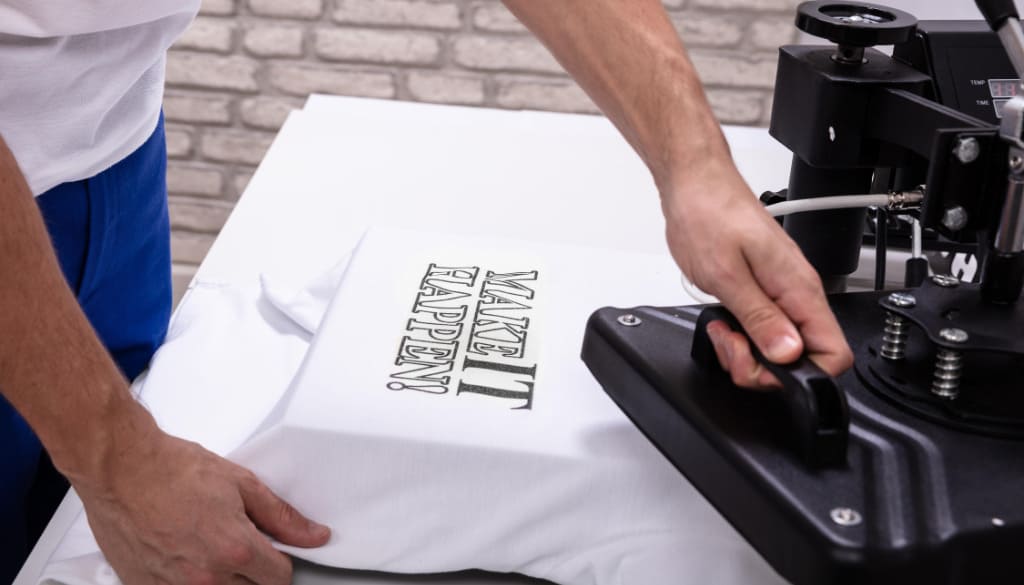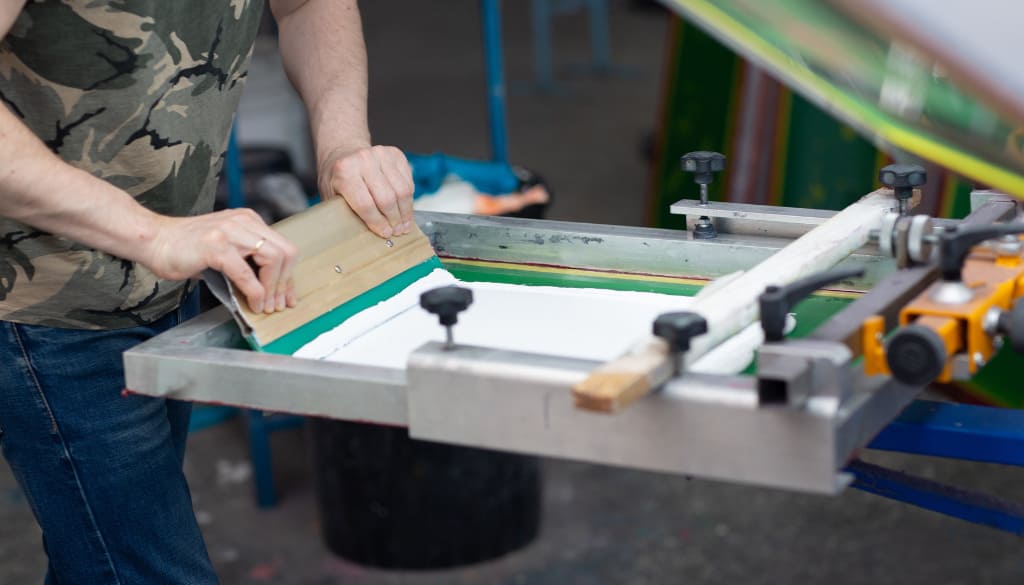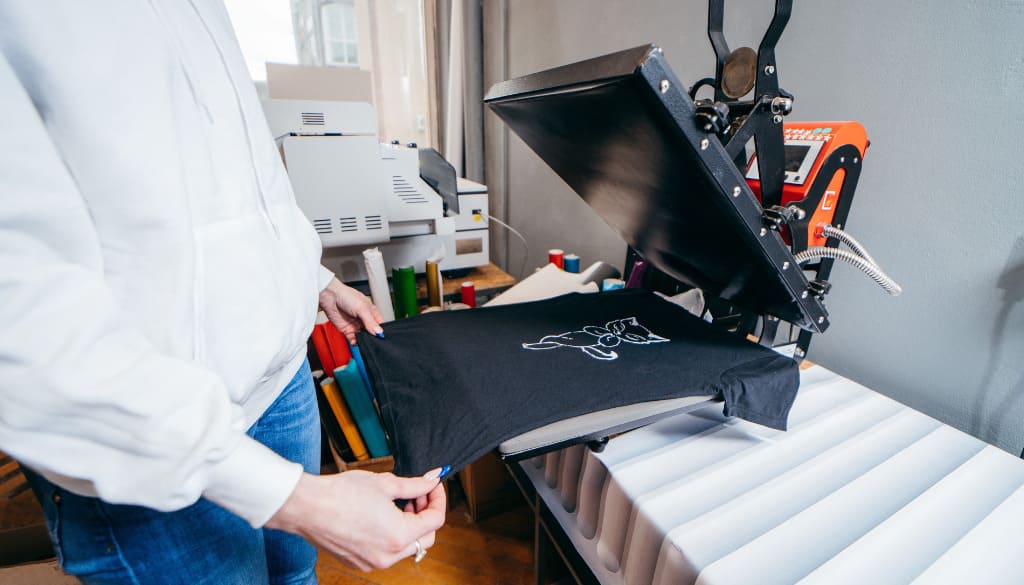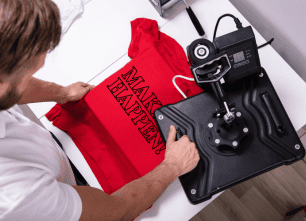In today’s personalization and online business era, printing designs on shirts has become familiar to consumers and sellers in the Print On Demand (POD) industry. For POD sellers, mastering shirt printing techniques helps improve product quality, enhances customer experience, and boosts profitability. This article offers a comprehensive guide how to printing designs on Shirts, including how to choose the right printing method and production partner.
Why So Many People Want How to Print Designs on Shirts
The demand for custom shirt printing is no longer just a trend – it has become an integral part of modern consumer culture. Here are some of the main reasons driving this interest, especially among potential POD customers:
- Expressing Personality and Style: A custom-printed shirt is a powerful medium for people to showcase their interests, beliefs, passions, and unique style. From playful graphics and meaningful quotes to stunning artwork, T-shirts are silent statements of identity.
- Preserving Memorable Moments: Printed shirts are a great way to commemorate special events and milestones vacations, concerts, birthdays, or simply capturing the faces of loved ones.
- Standing Out: In a world dominated by mass-produced fashion, a custom-printed shirt allows individuals to stand out and reflect their taste.
- Supporting Favorite Celebrities, Brands, or Communities: Printed shirts are an effective way for fans to visually express their love and support for artists, sports teams, brands, or social causes.
- Becoming Meaningful, Unique Gifts: A custom designed shirt makes a thoughtful and one of a kind gift, personalized to the recipient’s style and preferences.
- Playing the role of a Powerful Marketing Tool: For businesses and organizations, branded shirts help boost brand visibility, promote events, and foster team spirit.
- Creating Emotional Connection: A design or message on a shirt can evoke strong emotions and spark connections between people with shared values or interests.

Popular Shirt Printing Methods for POD Sellers
In today’s fashion and POD industry, various technologies are used to print designs on shirts. Each method comes with its own set of advantages and disadvantages, making it crucial for sellers to choose the right technique based on their needs.
1. Screen Printing
How It Works: This method uses a pre-made stencil (screen). Ink is pressed through the mesh onto the fabric, with a separate screen required for each color in the design.
Advantages
- Exceptional Durability: Prints are long-lasting and resistant to fading, even after multiple washes.
- Vibrant Colors: Produces bright, sharp, and vivid color effects.
- Cost-Effective for Bulk Orders: Very economical when printing large quantities.
Disadvantages
- High Initial Cost: Expensive to create screens for each design, making it unsuitable for small runs.
- Limited for Complex Designs: Struggles with multi-color, gradient, or highly detailed images.
- Long Preparation Time: Screen creation and setup require considerable time before the actual printing can begin.
Best For: Uniforms, class shirts, group shirts, company logos, simple designs, and large quantity orders.
2. Heat Transfer Printing
How It Works: The design is printed onto special heat transfer paper, then transferred to the t-shirt using high temperature and pressure via a heat press machine.
Advantages
- Easy to Execute: The process is straightforward and can be done at home.
- Low Initial Investment: Does not require expensive equipment upfront.
- Handles Complex Images: Works well for photographs and multi-color designs.
- Ideal for Small Runs: Perfect for personalized or small-batch printing.
Disadvantages
- Low Durability: Prints may crack or peel after multiple washes.
- Thick and Stiff Feel: The printed area may not feel as soft as the fabric and can be slightly raised.
Best For: Couple shirts, small group shirts, commemorative shirts, portrait prints, and complex multi-color designs.
3. Direct to Garment (DTG) Printing
How It Works: Uses specialized inkjet printers to print designs directly onto the fabric, similar to printing on paper.
Advantages
- High Image Quality: Prints photographs and complex designs with excellent resolution and detail.
- Unlimited Colors: Can print as many colors as desired without additional cost.
- Soft Feel: Ink absorbs into the fabric, so the print does not feel thick or heavy.
- Perfect for Small Runs: Ideal for print on demand (POD) and personalized orders.
Disadvantages
- High Equipment Cost: DTG printers are expensive to purchase.
- Slow Printing Speed: Less efficient than screen printing for large-scale production.
- Variable Durability: Depends on proper post-printing treatment, such as heat curing.
- Best on Cotton: Works most effectively on cotton fabrics.
Best For: Cotton T-shirts, complex designs, photographs, personalized products, and custom fashion.
4. Vinyl Heat Transfer
How It Works: Designs or text are cut from heat transfer vinyl sheets using a specialized cutting machine, then heat-pressed onto the fabric.
Advantages
- High Durability: Prints are very durable and resistant to peeling or fading.
- Diverse Colors: Available in many colors, including special effects like glitter, glow-in-the-dark, and reflective.
- Standout Effect: The print surface may be slightly raised, creating a striking visual impact.
Disadvantages
- Not Suitable for Intricate Details: Difficult to cut and press very small or detailed elements.
- Thicker Feel: The vinyl surface is slightly thicker, which may make the shirt stiffer at the print area.
- Limited Colors: Each color requires a separate vinyl layer, making it unsuitable for multi-color photographs.
Best For: Sports jersey names and numbers, simple logos, slogans, and uniforms with minimal details.
5. Direct to Film (DTF) Printing
How It Works: The design is printed with specialized DTF ink onto a special film, coated with adhesive powder while the ink is wet, dried, and then heat-pressed onto the t-shirt.
Advantages
- Versatile on Various Fabrics: Works on cotton, polyester, and both light and dark fabrics.
- Vibrant and Durable Colors: Offers good adhesion with sharp, bright prints.
- Soft Feel: The print is not overly thick, providing comfort when worn.
- Flexible Production: Films can be printed in advance and pressed onto shirts when orders are received.
Disadvantages
- Requires Specialized Materials: Includes DTF film, ink, and adhesive powder.
- Multi-Step Process: More complex than standard heat transfer methods.
- Durability Varies: Depends on material quality and the pressing process.
Best For: POD products with diverse fabric types, personalized fashion, complex designs, and good color durability on various fabrics.
6. Embroidery
How It Works: Uses industrial or manual embroidery machines to stitch designs or text onto fabric with threads.
Advantages
- High Aesthetic Value: Creates luxurious, unique products with a standout 3D effect.
- Extremely Durable: Embroidery does not fade, peel, or crack over time.
- Highly Resilient: Very resistant to frequent washing and regular use.
Disadvantages
- High Cost: More expensive than other printing methods, particularly for large or complex designs. It also requires skilled labor, which further increases production costs.
- Long Production Time: Embroidery takes longer than printing processes.
- Limited Detail and Color: Difficult to depict very small details, gradients, or too many colors in one design.
Best For: Company logos, polo shirts, jackets, hats, premium uniforms, and products needing a luxurious and durable touch.
This guide to t-shirt printing methods is crafted to help POD sellers make informed decisions to optimize product quality and customer satisfaction.

The Simplest How to Print Designs on Shirts at Home
If you are new to shirt printing and want to try it at home without investing in professional equipment, consider the following simple heat transfer method for best results.
1. Preparation
- T-shirt: Select a shirt made from material compatible with your heat transfer paper, typically cotton or a cotton blend. For best results, wash and iron the shirt flat before printing.
- Heat Transfer Paper: Buy the appropriate type for your shirt’s fabric (there are options for both light and dark fabrics).
- Color Inkjet Printer: Use a standard color inkjet printer at home.
- Iron: Use a dry iron (no steam) and a flat, sturdy surface for ironing (for example, a wooden table covered with a towel).
- Scissors or Craft Knife: To cut out the printed image.
- Parchment Paper or Non-Stick Sheet: To protect the design while ironing.
2. Step-by-Step Instructions
Step 1: Design Your Image
- Use graphic design software or simple photo editing tools to create or select your image. Make sure the image size matches the shirt and your desired placement.
Step 2: Print the Image on Heat Transfer Paper
- For light fabric paper: Print the image normally (no need to mirror).
- For dark fabric paper: Print the image mirrored (reverse).
- Carefully read the instructions for your specific heat transfer paper to ensure correct print settings.
- Cut out the image: Use scissors or a craft knife to separate the image from the sheet. For dark fabric paper, peel off the white backing around the image.
- Place the image on the shirt: Decide where you want to print, then place the printed side of the transfer paper face down on the fabric.
Step 3: Iron the Image onto the Shirt
- Place a layer of parchment paper or a non-stick sheet over the image.
- Set the iron to the recommended temperature (refer to the transfer paper instructions). Iron firmly and evenly over the parchment paper for the instructed time (usually 30 seconds to 2 minutes, depending on the paper and image size). Move the iron across the entire image, especially the edges.
Step 4: Peel Off the Paper
- After ironing, let the design cool slightly (as per the paper instructions), then gently peel off the transfer paper from the shirt.
Step 5: Finish
- Your custom-printed t-shirt is now complete and ready to wear or gift.
3. Important Tips for Home Printing
- Carefully read the instructions for your specific heat transfer paper before starting.
- Test the process on a scrap piece of fabric before printing on the actual shirt.
- Ensure the ironing surface is flat and sturdy for even heat distribution.
- Iron for the recommended time and with enough pressure to ensure the design adheres well to the fabric.
- Be gentle when peeling off the paper to avoid damaging the image.

Important Notes for T-Shirt Printing
To ensure your printed designs are beautiful, durable, and meet customer expectations – especially in the POD business – sellers should pay attention to the following key factors:
- Design Image Quality: Use high-resolution, sharp images that won’t pixelate when printed in large sizes. For logos and text, always use vector file formats (AI, EPS, SVG) to guarantee the best quality at any scale.
- Choosing the Right Printing Method: Carefully consider design elements (number of colors, complexity), fabric type (cotton, polyester, blends), order quantity, and budget to select the most suitable printing method.
- T-Shirt Fabric Quality: The type of fabric directly affects the print’s quality and durability. Cotton is typically best for DTG and heat transfer, while polyester is ideal for sublimation printing.
- Ink Quality: Use genuine, high-quality inks to ensure vibrant colors, strong adhesion, and long-lasting prints.
- Printing Process: Follow the specific process for each printing method to achieve optimal print quality.
- Post-Printing Treatment: Certain methods, particularly DTG, require additional steps like heat curing to properly set the ink and improve color durability.
- Care Instructions for Printed Shirts: Provide customers with proper care instructions (e.g., wash inside out, use cold water, avoid harsh detergents, do not iron directly on the print) to extend the life of the design.
- Product Quality Control: Before delivering to customers, thoroughly check the print quality to ensure there are no issues like color bleeding, peeling, blurring, or misalignment.
Should You Print In-House or Use a Printing Service?
This is a crucial decision for every POD seller, as it directly impacts costs, time, product quality, and business scalability. Below is an analysis of the pros and cons of both options:
1. Printing In-House
Advantages
- Better quality control: Directly monitor and control every step of the printing process.
- Flexible quantities: Easily print small runs or sample tests.
- Time flexibility: Not dependent on a print shop’s schedule.
- Potential for higher long-term profits: With steady orders, investing in equipment can lower per-unit printing costs.
Disadvantages
- High initial investment: Requires purchasing machinery, equipment, inks, and consumables.
- Requires knowledge and skills: Need to learn and practice various printing techniques.
- Time and effort intensive: Printing and equipment maintenance can be time-consuming.
- Hard to handle large orders: Home printing productivity is often limited.
- Quality risks: Inexperience can lead to problems like damaged shirts, printing errors, or ruined designs.
2. Using a Printing Service
Advantages
- No upfront investment: Saves on equipment and machinery costs.
- Access to diverse printing methods: Utilize advanced technologies you may not afford independently.
- Quality assurance (with reputable partners): Professional print shops have experience and strict quality control.
- Ability to handle large orders: Easily scale up when big orders come in.
- Saves time and effort: Focus on design and marketing instead.
Disadvantages
- Dependence on partners: Product quality and delivery time rely on the print shop.
- Limited quality control: Must choose a reputable partner with good quality control processes.
- Higher per-unit cost (initially): Compared to self-printing, once you have equipment and steady orders.
- Less flexibility for test prints or special requests: Sample printing may take extra time and cost.
Advice for POD Sellers
For new POD sellers or those without enough resources, outsourcing printing to a reputable partner is a smart and safe choice. Focus on market research, creative design, and brand building. As your business grows and orders become stable, consider investing in your printing equipment to increase control and optimize costs.

FlashShip – Trusted Shirt Printing Partner for POD Sellers
If you are looking for a reliable, fast, and professional shirt printing partner in the POD industry, FlashShip – quality t-shirt printing factory is the optimal choice.
Why Choose FlashShip?
- Diverse Printing Technologies: FlashShip offers modern printing methods like DTG, heat transfer, and vinyl, meeting all needs for design, fabric, and order quantity.
- Top-Quality Printing: FlashShip guarantees sharp, durable prints with strictly controlled ink and materials.
- Competitive Pricing: FlashShip optimizes production costs to offer the most competitive prices, helping you maximize profits.
- Fast Production Time: Professional and efficient workflows ensure quick production, so you can deliver on time.
- Dedicated Support: FlashShip understands POD sellers’ challenges and offers support on printing methods, design, production, and shipping.
- Convenient Order Management: An easy-to-use online system lets you track orders and manage products effortlessly.
- Nationwide Delivery: FlashShip delivers to every province, helping you expand your market easily.
- Reputation and Experience: With years of industry experience, FlashShip has built a strong reputation and become a trusted partner for thousands of POD sellers.
Whether you’re just starting or managing thousands of monthly orders, choosing the right printing method is key to balancing quality, cost, and speed. Mastering popular techniques helps you stay competitive, boost conversions, and grow your reach across platforms like Amazon, Etsy, TikTok Shop, and Shopify.
If you are looking for a reliable printing partner that offers comprehensive support for POD sellers – from design to order fulfillment – contact FlashShip today at (+84) 943 024 337 or visit seller.FlashShip.net for consultation, quotes, and to start your journey toward more effective selling.

Leave a Reply